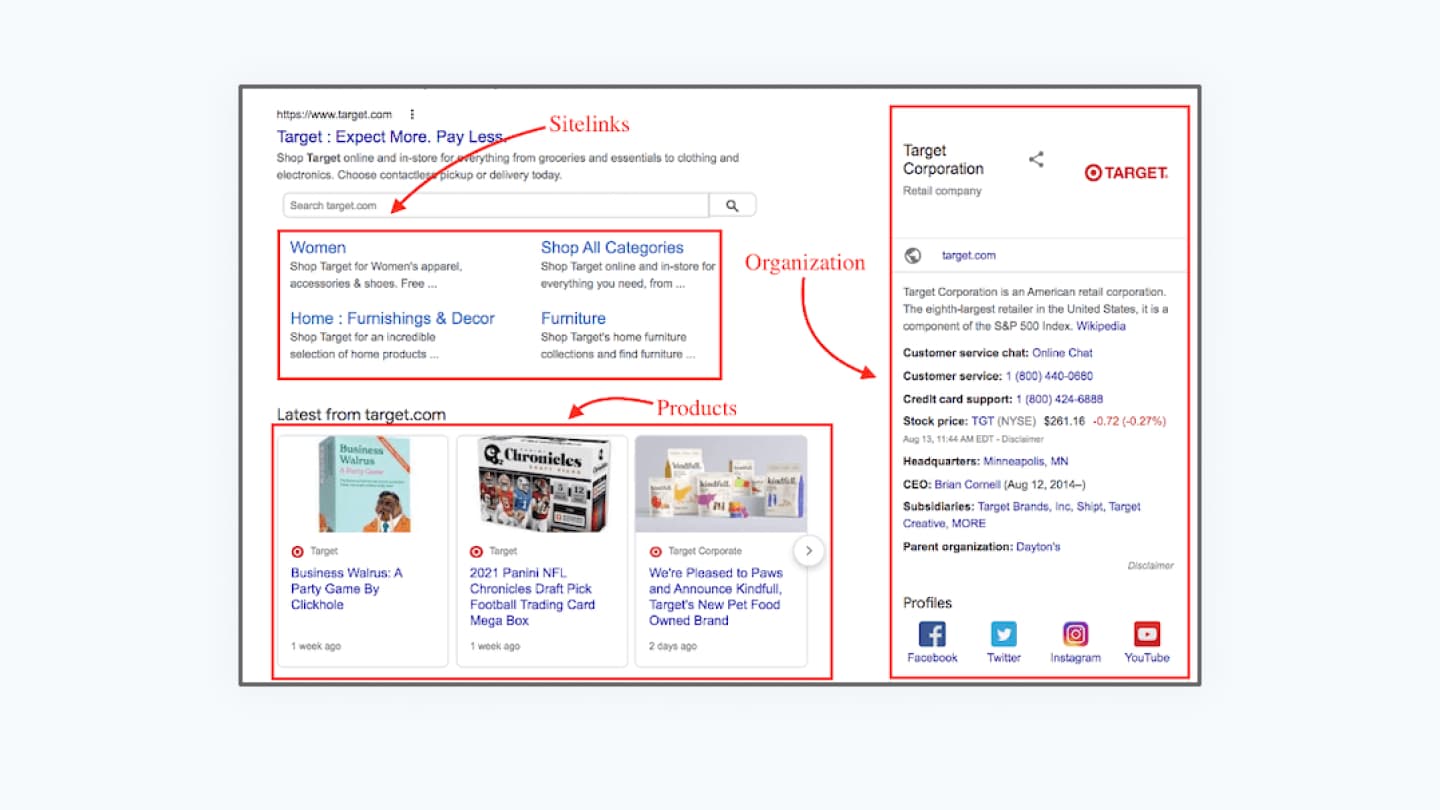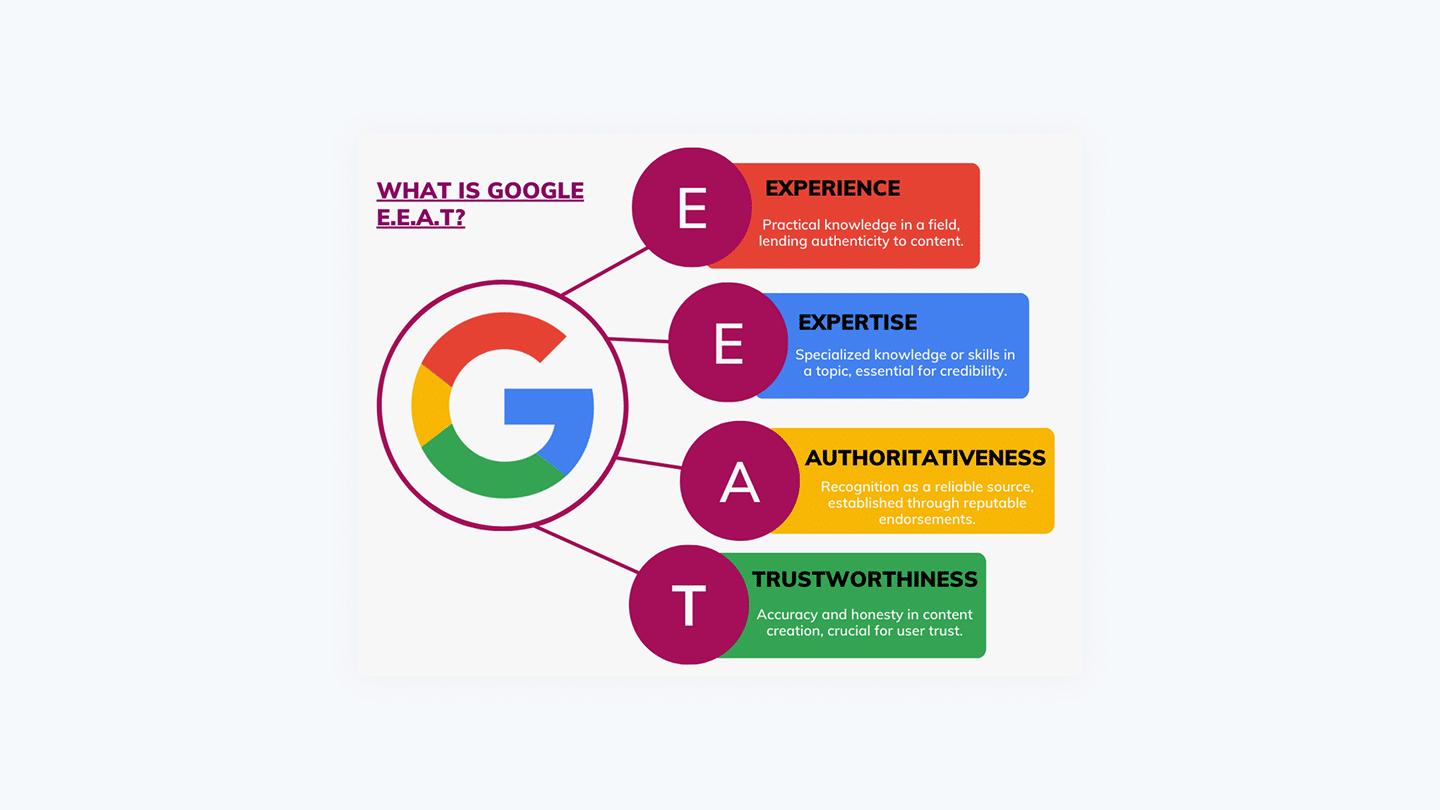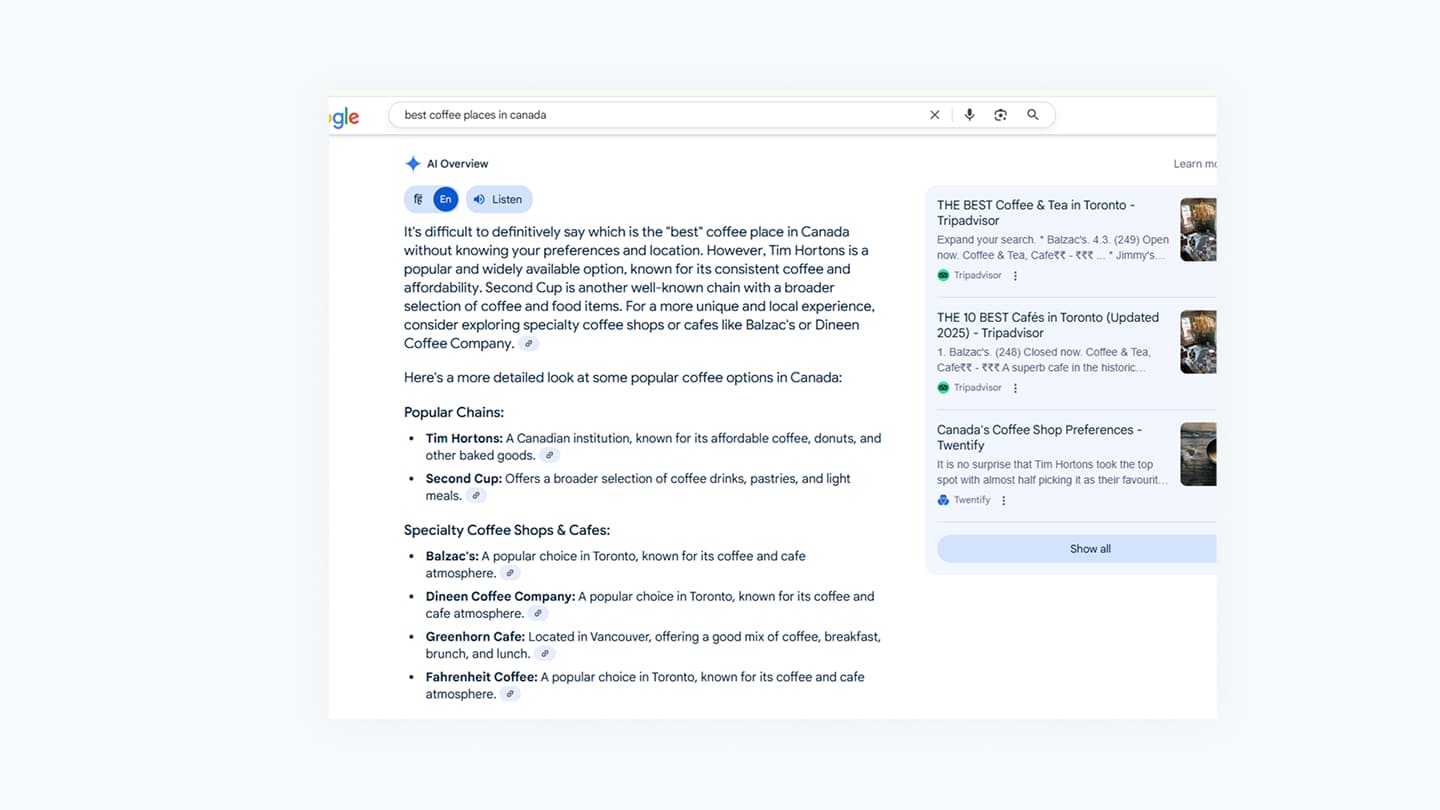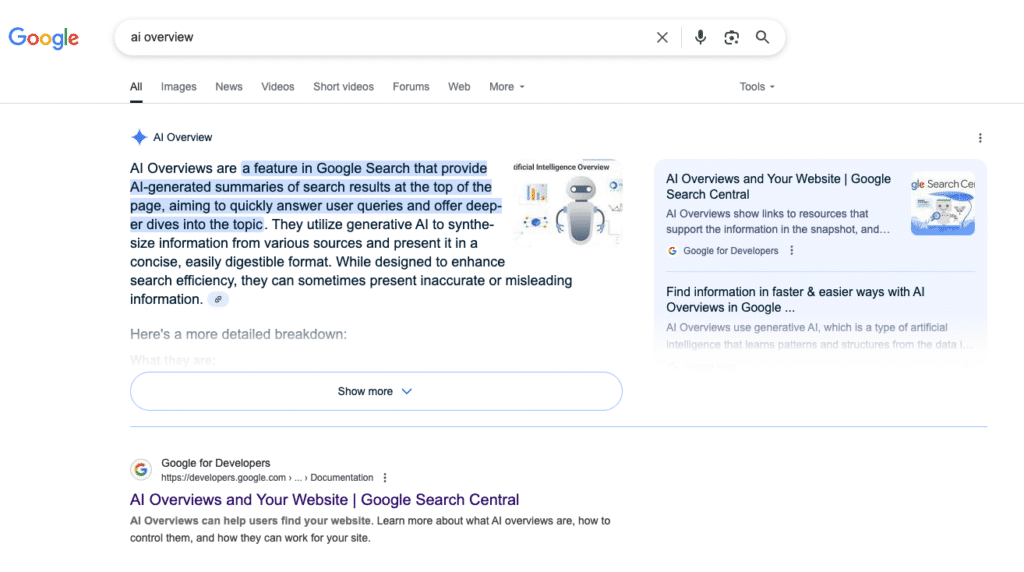When was the last time you opened a website to find answers to your search queries? If you have to think twice, it’s likely because you’ve been relying on the concise, automated responses that now appear at the top of search engines. These AI-generated summaries, called AI Overviews, are quickly turning into the primary way people access information online. Introduced through Google’s Search Generative Experience (SGE), they collect insights from various websites and display them directly within the search results. As a result, users often get what they need without ever clicking on a link.
With AI Overviews sitting above ads, organic listings, and even featured snippets, traditional SEO tactics are no longer enough. If your information doesn’t clearly address key questions or provide reliable insights, your visibility may decline, even if you appear at the top of traditional search results. To maintain prominence, your material needs to be recognized as credible and valuable by the systems that determine what users see first.
For businesses, publishers, and content creators, this requires reconsidering how information is organized and delivered online. The following strategies highlight essential approaches to ensure your presence remains visible, trustworthy, and competitive in a search environment increasingly focused on providing clear and direct answers.
Understanding AI Overviews
AI systems like Google’s Search Generative Experience (SGE) and other advanced language models create summaries that provide quick answers by pulling information from a variety of trusted sources. These summaries appear at the top of search results, allowing users to get the information they need without visiting multiple websites.
Key Factors to Rank in AI Overviews
To improve your chances of being featured in AI Overviews, consider implementing the following strategies:
1. Create Clear, Focused Content that Answers User Queries
Google’s Search Generative Experience (SGE) generates summaries by drawing from reliable and trustworthy sources. For content to stand out, it needs to be clear, well-structured, and easy to follow. Breaking your writing into focused sections that answer specific questions helps ensure that each part provides a precise and straightforward response. Additionally, using long-tail phrases and everyday language that reflect how people naturally ask questions is crucial, as 88.1% of queries triggering AI Overviews are informational, according to a study. This highlights the strong demand for direct, concise answers. For this, tools like Surfer, Clearscope, and Content Harmony can assist in identifying related keywords to incorporate smoothly into your content.

2. Use Structured Data (Schema Markup)
Schema markup helps AI understand the content of your page. If you’re publishing a review, guide, blog post or tutorial, use the relevant schema to label your content. Article, FAQ, HowTo, Review, and Product schema types are particularly useful. They help AI systems categorize your page correctly, which increases your chances of being featured in search summaries and overviews. Schema also enhances your visibility in featured snippets and other structured formats on search result pages.
To implement Schema markup, you can either use tools like Google’s Structured Data Markup Helper to generate the code or manually add JSON-LD scripts to your webpage’s HTML. After adding the markup, test it using Google’s Rich Results Test or the Schema Markup Validator to ensure everything is correctly configured.

3. Use Clear Formatting for Better Readability
Formatting plays a crucial role in how AI and users consume your content. Google’s AI favours text that is easy to scan and understand. Breaking your content into short paragraphs, bullet points, and numbered lists helps highlight key information quickly. This approach not only assists AI in extracting relevant data but also enhances the user experience by making your content more engaging and reducing bounce rates. Tools like Grammarly, Hemingway, and SurferSEO can help ensure your writing is clear and well-structured.
4. Meet Google’s Technical Requirements
To get your site included in AI Overviews, it’s essential that Google can easily access and understand your pages. This means your site should load quickly, display correctly on mobile devices, and be built with clean code. A common mistake is blocking key files like JavaScript or CSS, which prevents Google from crawling your pages properly. These files help search engines render your pages as users see them. If they are blocked using the robots.txt file, which controls what search engine crawlers can access, Google may not be able to understand your layout, functionality, or mobile experience. To avoid such issues, regularly monitor your site using Google Search Console and PageSpeed Insights. Fix any crawl errors, speed up your pages by compressing images, and ensure your mobile site contains the same content as your desktop version. Additionally, running detailed site audits with tools such as Screaming Frog or Ahrefs helps spot and resolve technical issues before they impact your search rankings.
5. Build E-E-A-T Across All Pages
Experience, Expertise, Authority, and Trustworthiness remain essential. AI systems assess the credibility of the content creator, so including an author bio that outlines your qualifications is important. Support your information with references from reliable sources and link to official or primary data whenever possible. Additionally, your website should also display trust signals such as an SSL certificate, which protects user data by encrypting information exchanged on your site. Clear navigation and accessible contact information further enhance user trust. It is also important to have updated policies, including privacy policies that explain how you collect, use, and protect user data, and terms of service that outline the rules and expectations for using your website. Keeping these elements current helps AI systems better assess your content’s reliability for inclusion in AI summaries.

6. Keep Content Updated and Relevant
AI models often show a preference for timely and relevant content. If your article includes statistics, trends or regulatory information, keep them current. Outdated content is less likely to appear in AI overviews or summaries. Set a review cycle to update key articles and make sure each one displays a last modified date. Updating internal links, rechecking facts, and adding new examples can extend the life and reach of your content.
7. Add Visual and Multimedia Content
Visual content such as videos, infographics, and web stories is often included in AI-generated search summaries. If your content includes tutorials, data, or step-by-step guides, try presenting part of it visually. Clear alt text and captions help AI correctly understand images and videos. Additionally, repurposing longer content into web stories or short video clips can be effective.

8. Strengthen Local SEO for Regional Queries
For location-specific queries, AI relies on local signals. Ensure your Google Business Profile is accurate and up to date. Include city or region names naturally within your content to improve relevance. Additionally, use consistent name, address, and phone number (NAP) details across all directories and websites. These factors increase your chances of appearing in AI-generated local recommendations and search summaries.

Conclusion
AI Overviews have become crucial for maintaining visibility in search results. While manual optimization demands time and precision, AI marketing agents simplify the process by automatically analyzing and optimizing your content for AI Overviews. From keyword research to content structure, this AI-driven approach saves valuable time and helps you rank in Google AI Overview more effectively, allowing you to focus on producing quality content. Embracing such technology ensures your brand stays competitive and visible as search engines increasingly rely on AI-generated summaries.

